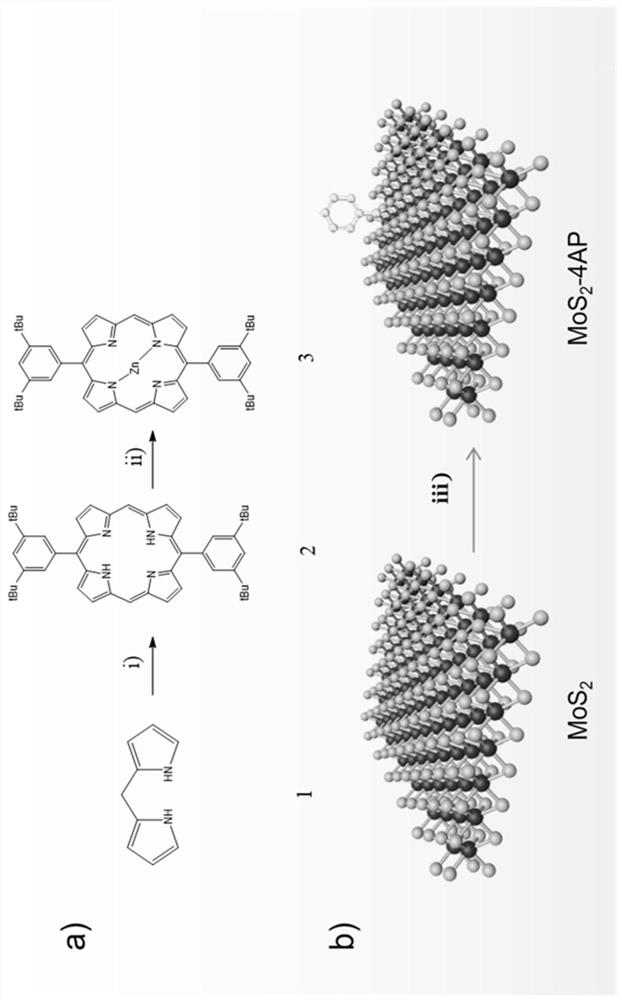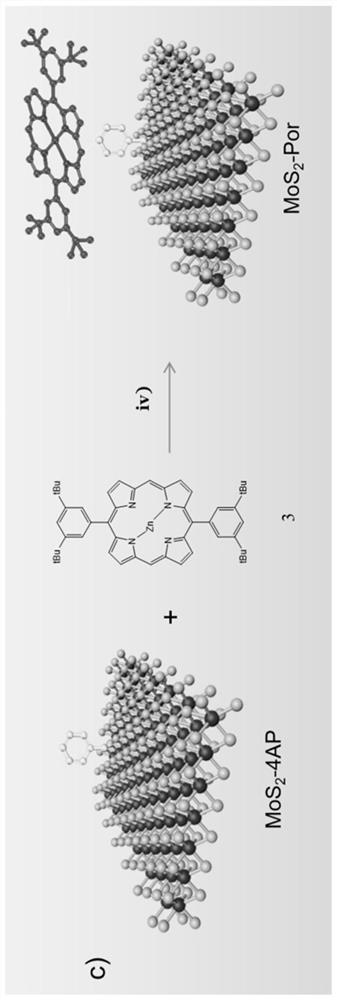A kind of porphyrin covalently linked molybdenum disulfide nonlinear nano-hybrid material and its preparation and application
A nano-hybrid material, molybdenum disulfide technology, applied in the direction of nonlinear optics, organic chemistry, zinc organic compounds, etc., can solve the problems of small effect and poor stability, achieve enhanced dispersion and stability, and not easy to reproduce Gathering effect
- Summary
- Abstract
- Description
- Claims
- Application Information
AI Technical Summary
Problems solved by technology
Method used
Image
Examples
Embodiment 1
[0044] see figure 1 and figure 2 As shown, this example provides a method for preparing a porphyrin covalently linked molybdenum disulfide nonlinear nano-hybrid material:
[0045] first step:
[0046] Add 1.3 g of dry MoS to a 50 mL schlenk bottle 2 , at N 2Add 10 mL of n-butyllithium at ambient. After sonicating for 2 h, stir for 2 days. After standing for 30 min, the supernatant was removed, and then 20 mL of ultrapure water was added to quench the residual n-butyllithium. Add an equal volume of ethanol and sonicate for 30 min. Centrifuge at 12,000 rpm for 20 min with a centrifuge to collect the precipitate. The resulting precipitate was redistributed into ethanol, and the above operation was repeated to wash away the organic matter. Then the precipitate was dispersed in ultrapure water and centrifuged at 4000rpm for 30min to remove unstripped MoS 2 . The supernatant was taken, centrifuged at a high speed of 12000rpm for 20min, and the precipitate was collected. ...
PUM
 Login to View More
Login to View More Abstract
Description
Claims
Application Information
 Login to View More
Login to View More - R&D
- Intellectual Property
- Life Sciences
- Materials
- Tech Scout
- Unparalleled Data Quality
- Higher Quality Content
- 60% Fewer Hallucinations
Browse by: Latest US Patents, China's latest patents, Technical Efficacy Thesaurus, Application Domain, Technology Topic, Popular Technical Reports.
© 2025 PatSnap. All rights reserved.Legal|Privacy policy|Modern Slavery Act Transparency Statement|Sitemap|About US| Contact US: help@patsnap.com



